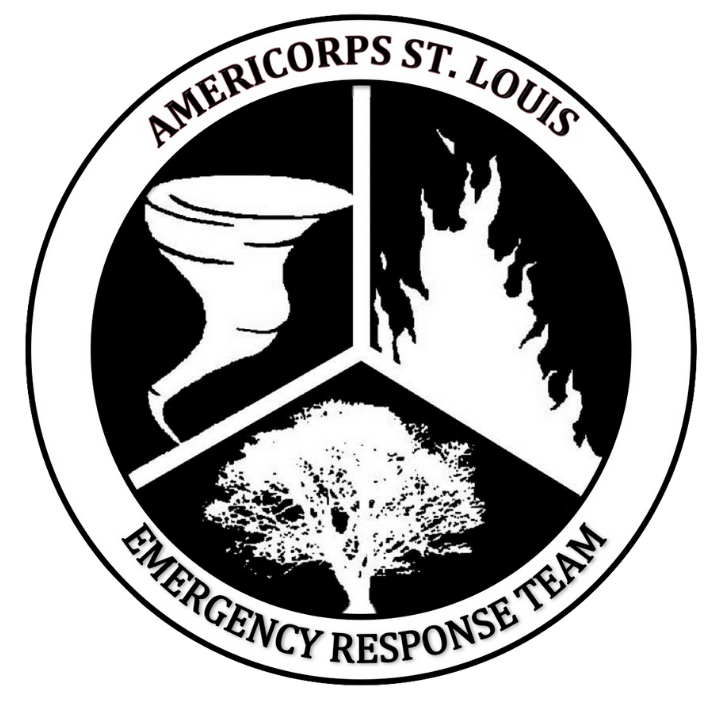
Disaster Response
AmeriCorps St. Louis' Emergency Response Team (ERT) consists of a highly skilled and thoroughly trained group of diverse individuals from all over the country. We utilize trainings from the National Incident Management System (NIMS) and best practices from Voluntary Organizations Active in Disasters (VOAD) so that each member is fully equipped and ready to deploy to impacted communities in a moment's notice.
Our disaster response services are divided between two categories: Response & Recovery Support and Tactical Field Services.
Response & Recovery Support
Our Members often find themselves serving behind-the-scenes in an office environment helping to organize and manage the response effort as part of an Incident Command Structure. Sometimes we serve in a coordinated effort with other AmeriCorps Disaster Response programs; sometimes it’s only a small team serving with voluntary agencies.
Recovery & response disaster deployments can include donations and warehouse management; volunteer management and training; volunteer team leads; mass care and shelter support; public information support; unified command support; case work and information referral; long term recovery support; and FEMA Voluntary Liaison Support.
Tactical Field Services
On the other side, many of our disaster deployments involve field work. Tactical field services can include debris removal; mold remediation and sanitation; mucking and gutting homes; flood fighting and sandbagging; temporary roof repair; minor and emergency home repairs; fire fuels mitigation; wildland fire suppression; hazard tree removal; health and wellness checks; and home assessments.
In some cases, Members may deploy to an area in the immediate aftermath of a disaster to perform these services, but often, these efforts continue for months (or even years) after the initial destruction.
Our Impact
Since 1994, ACSTL has assisted communities in 35 states and over 60 of Missouri’s 105 counties to meet disaster related needs. These missions have included responses to large incidents such as the COVID-19 pandemic and Superstorm Sandy to assisting small rural communities with limited resources. Over the years, the ERT has responded to wildfires throughout the West, Rocky Mountain and Great Lake states; flooding and tornadoes throughout the heartland; numerous hurricanes in the Atlantic and Gulf states; and ice storms in the Northeast, Midwest, and Plains.



